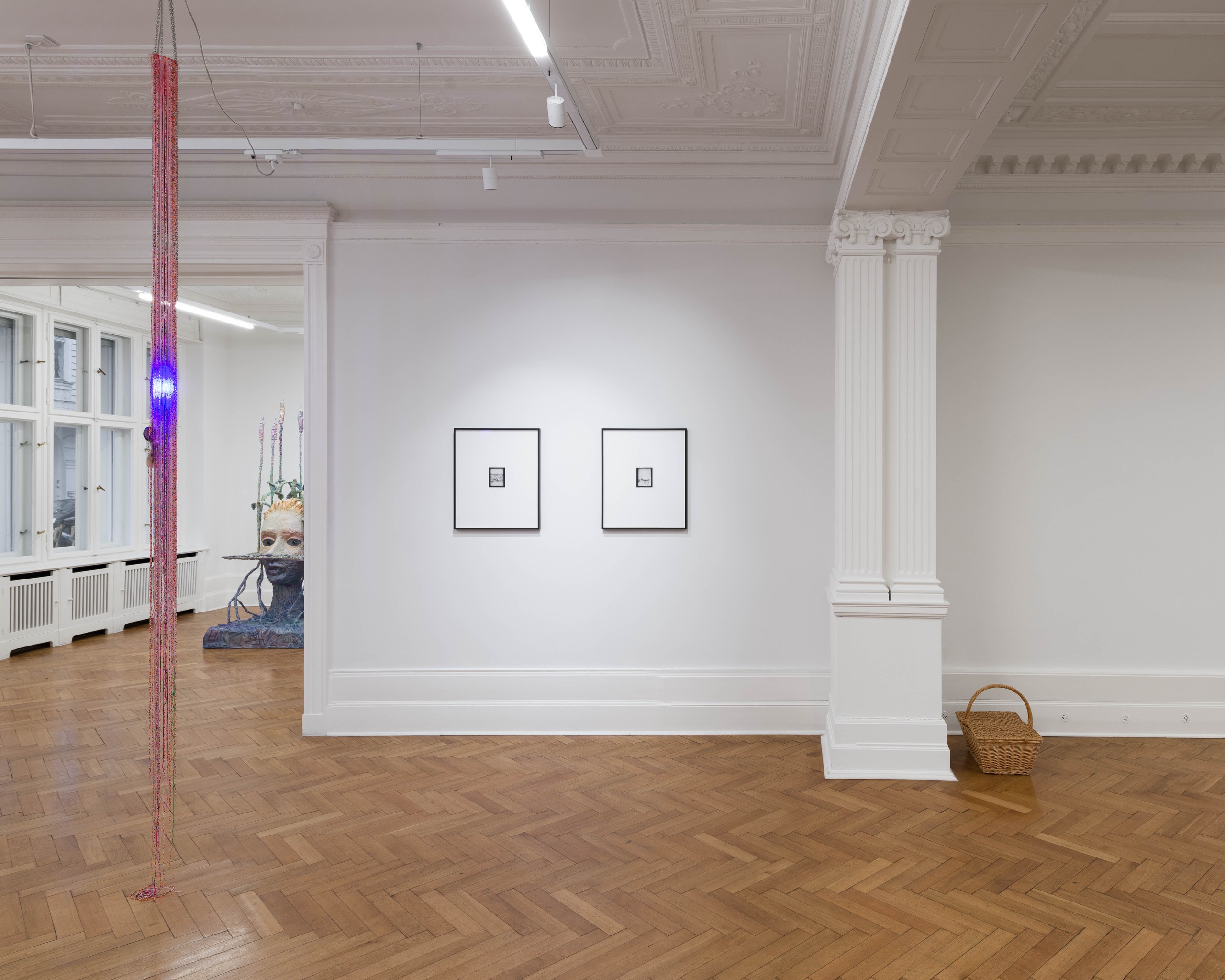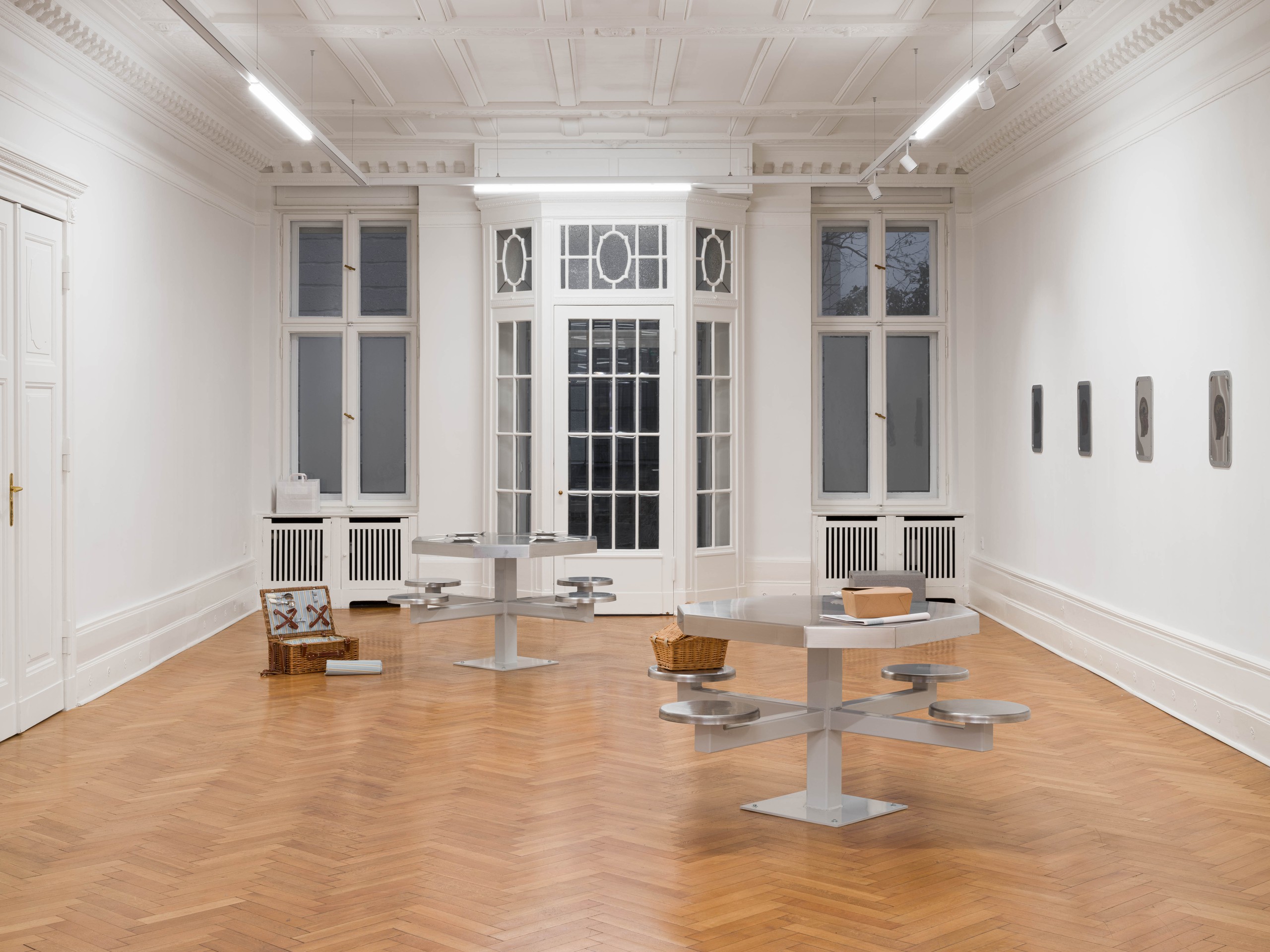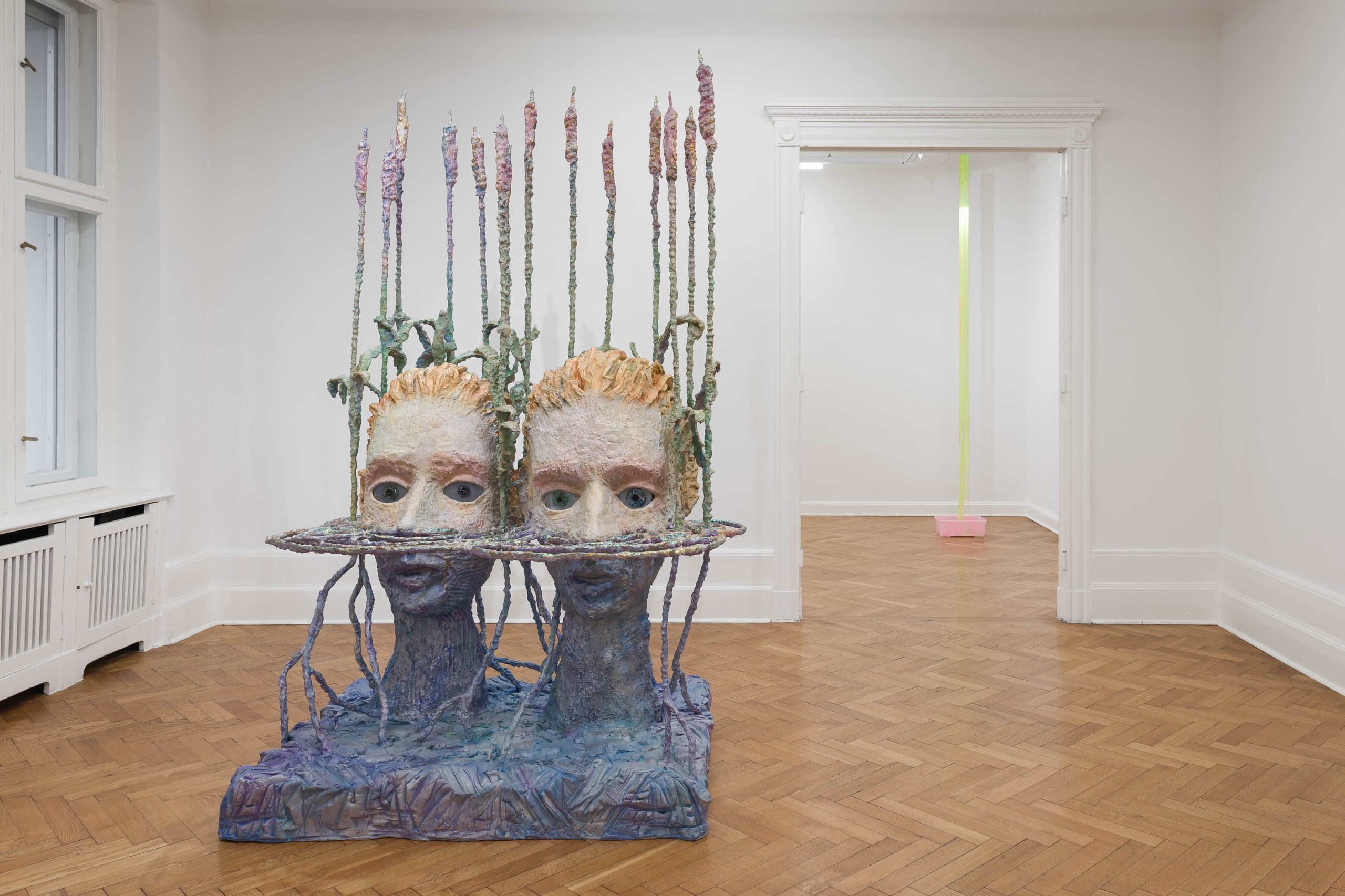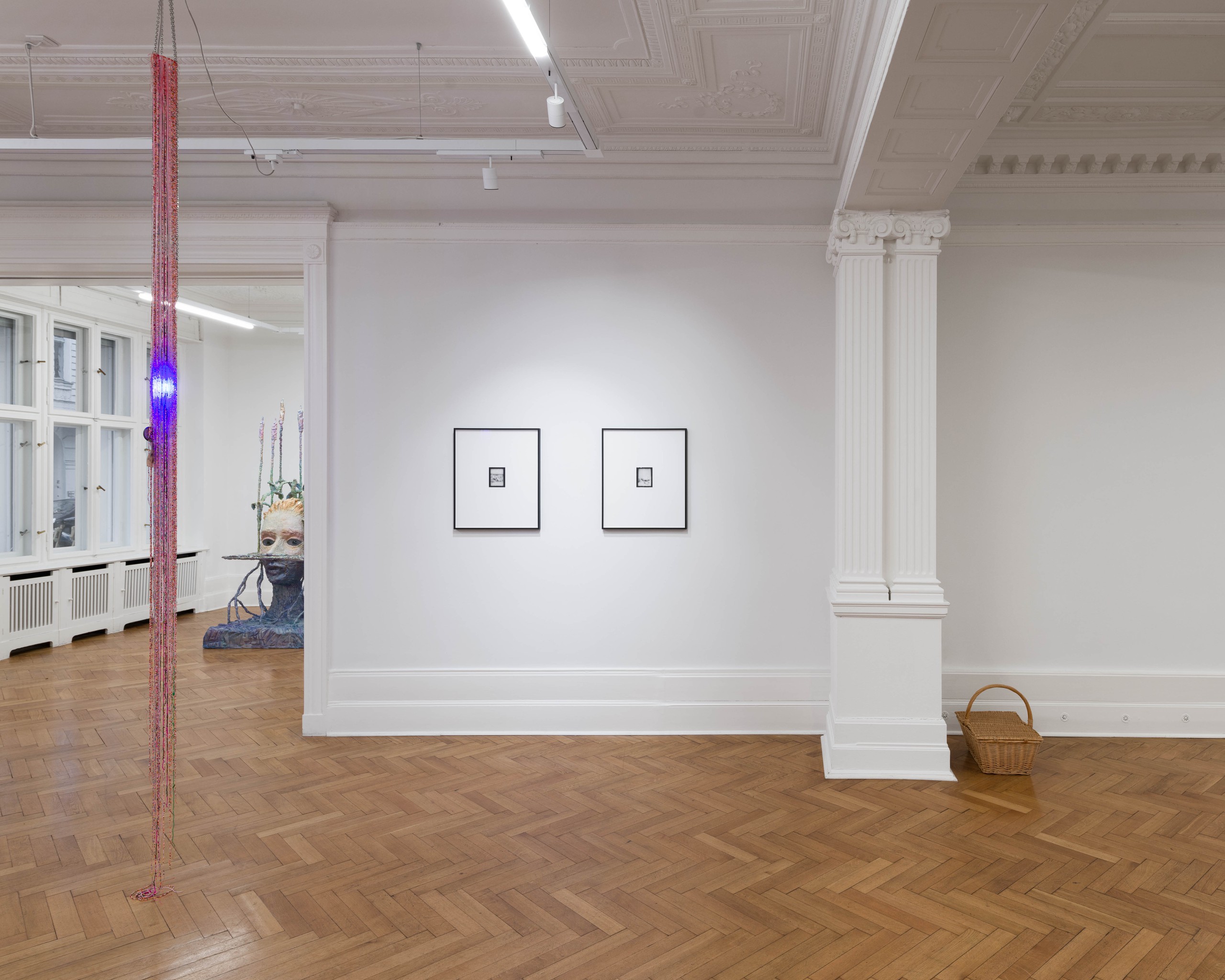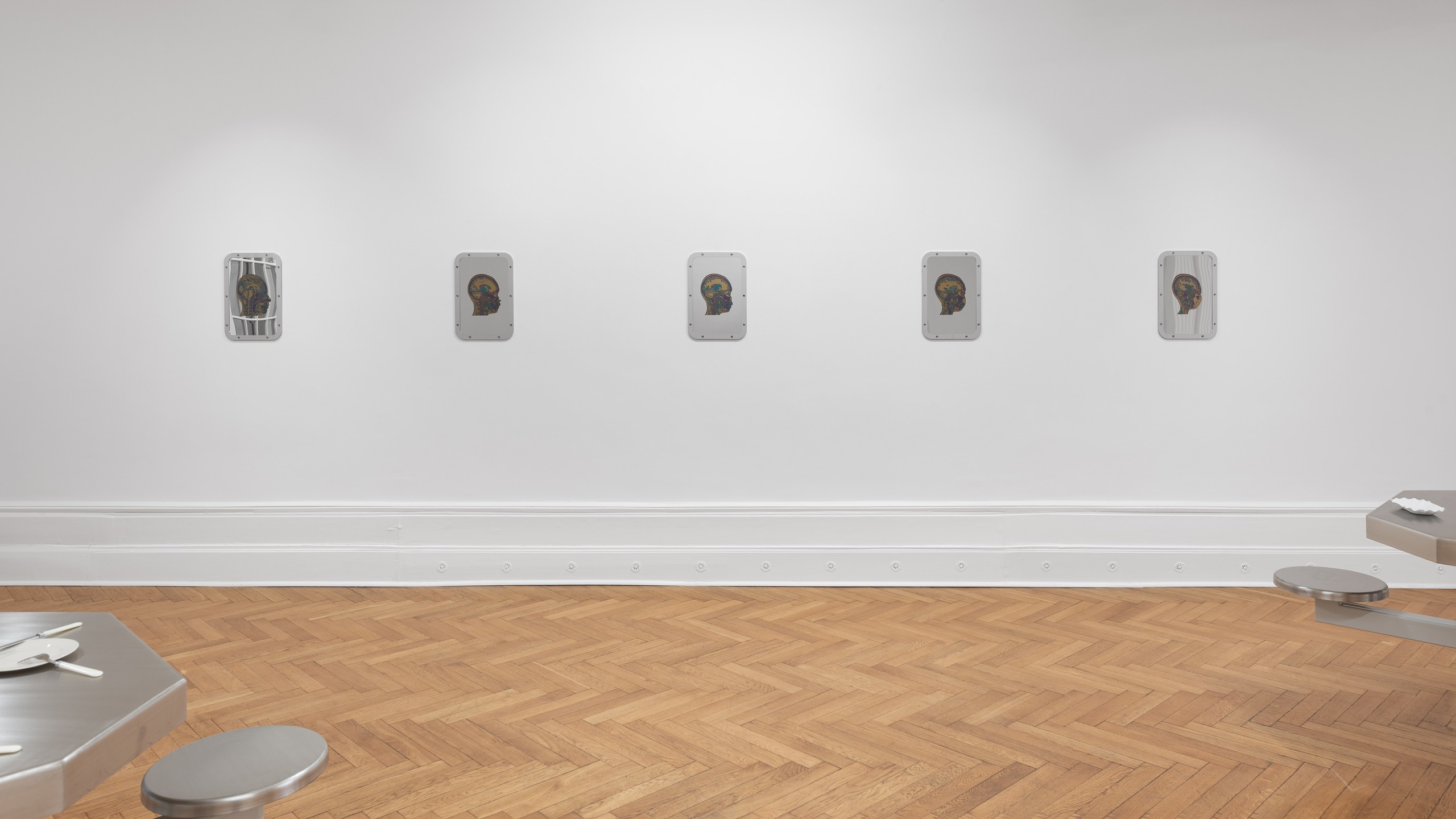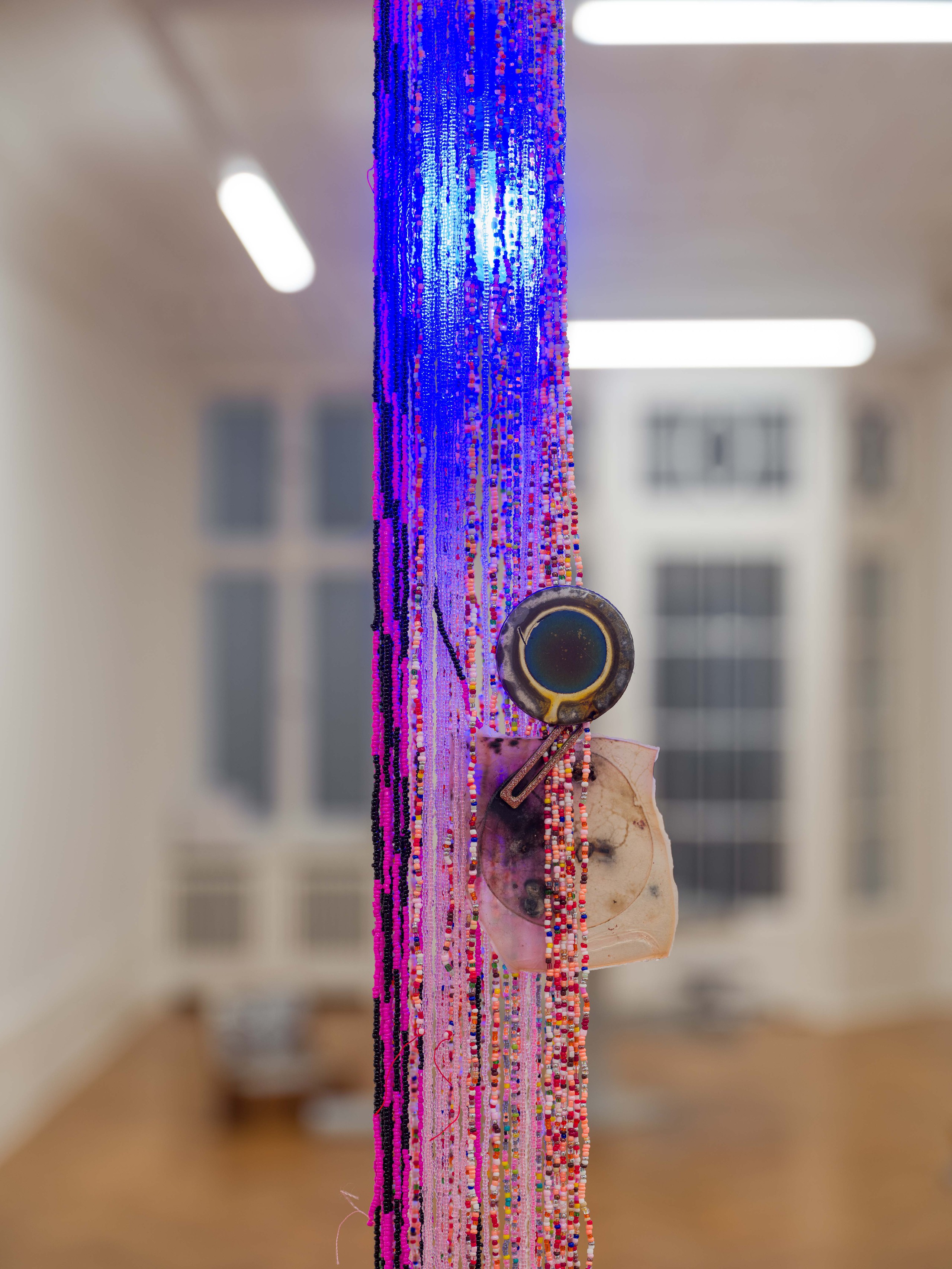Jean-Marie Appriou, Cory Arcangel, Mimosa Echard, Sung Tieu, He Xiangyu
The Persistence of a Present Past
January 26 – March 9, 2024
Curated by Jesi Khadivi
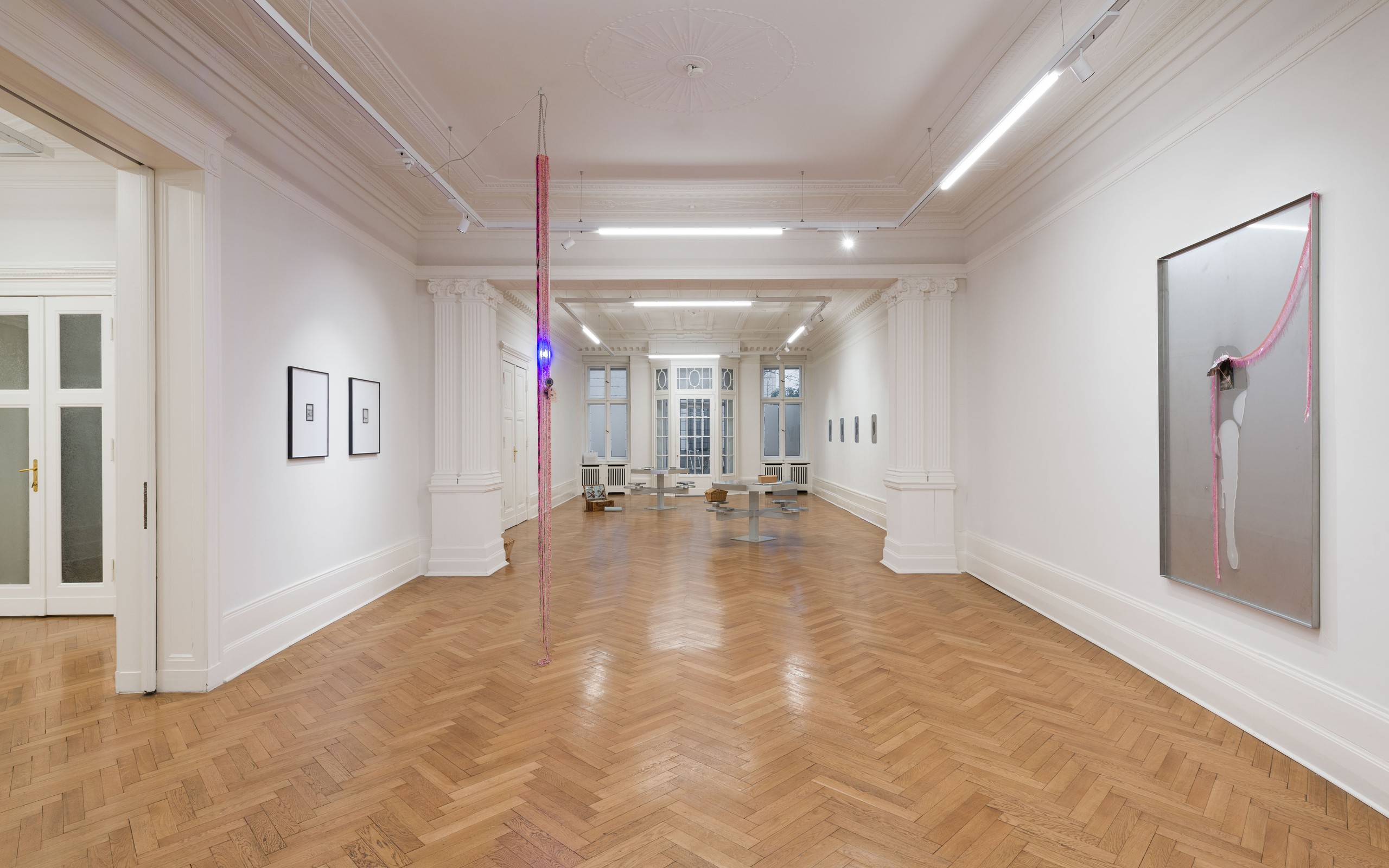
Société is pleased to announce The Persistence of a Present Past, featuring works by Jean-Marie Appriou, Cory Arcangel, Mimosa Echard, Sung Tieu, and He Xiangyu. The exhibition draws its title from Derrida’s writings on hauntology—the notion that every ontology is based on the ghostly traces it excludes. A ghost is an atemporal being. It’s less a phantom than a revenant whose arrivals and departures cannot be controlled. Hauntology implies a temporal dislocation, a “time out of joint” that, in Derrida’s formulation, undermines the sequential notion of linear time in favor of an intertwined conception of past, present, and future. The artists in The Persistence of a Present Past adopt a polychronic ethos. Time does not pass in their works, but rather accumulates. Addressing topics that range from ecology, mythology, visual culture, personal experience, and systems of social control, the works in the exhibition “speak with ghosts” to propose dynamic modes of knowing, remembering, sensing, and being.
Jean-Marie Appriou’s otherworldly sculpture The Floating Sowers suggests moments of passage, transformation, and transition—of crossing between worlds. Entangled in roots and sprouting vegetal growth, two spectral beings inspired by ancient sowers, gatherers, and foragers gaze intensely at the viewer. Linear time seems to collapse in an uneasy state of suspension between a mythological past and an uncertain future. The figure of Narcissus, a mortal son of the gods in thrall to his own reflection, has been described as a dissolved, liquid self, “perpetually disguised” and “perpetually displaced.” Mimosa Echard’s “Narcisse” series transforms clinical stainless-steel trays into receptacles for personal memories and associations. The spare, haunting work For Ana was inspired by her visit to the late Cuban-American artist Ana Medieta’s Ceiba Fetish in Miami. A sacred tree in Cuba, the ceiba, or “world tree,” is considered by many Mesoamerican and Caribbean cultures to connect the terrestrial world to the spirit world. Echard’s Sap sculptures, spills of brightly colored beads created in collective threading sessions with family members and friends, evoke the vital circulatory force of trees while ensnaring objects and mementos in a sticky, viscous goo.
Cory Arcangel compares the process of making art to “dowsing,” a technique used to search for underground water, minerals, or basically any invisible thing through the motion of a pendulum that reacts to unseen influences. In 21-11-2023-11-31-35-input_gb-po-1913, Arcangel subjects George Braque's painting Violin and Sheet Music on a Table (Petit Oiseau) to a technique he calls "deep frying"—recursively tweaking an image through common image manipulation techniques like compression, re-sizing, and modulation. Layering two different approaches to abstraction, Arcangel’s work posits a parallel between the cubist fracturing of time and space and the fragmentation and dispersion of the digital world. He Xiangyu’s diverse, multidisciplinary conceptual practice has been described as a form of “tactile thinking”—a means of integrating lost, hidden, and shared social memories into muscle memory. Such tactile thinking also extends into the artist’s attention to urban space and how he navigates the visceral textures of the city and the social traces they carry. A new series of photographs depicts post protest scenes that Xiangyu witnessed and captured during the eight years he lived in Berlin: destroyed vehicles, smashed windows, holes in sidewalk paving. Printed on layers of translucent glass, these ghostly images hover on the brink of disappearance, as if draining the blood from a memory.
Sung Tieu’s multifaceted practice explores narratives of migration, bureaucracy, surveillance, control, and psychological warfare through intertwining archival research, fiction, and sound. In Exposure to Havana Syndrome, Tieu revives the specter of an unexplained illness plaguing CIA operatives by taking MRI captures of her brain after exposing herself to sonic weaponry. A sense of dislocation and disorientation pervades her expansive installation Parkstück, which evokes spaces “where objects are protected from subjects, and subjects from objects.” Six speakers concealed within items like picnic baskets, food containers, or coolers cycle through ambient sounds such as footsteps, rattling keys, birdsongs, snippets of piano music. The shifting moods and associations of the sounds imbue this setting with the feeling of a non-place in which different registers of time and space slip and seep into one another, “leaving the body caught in a kind of neoliberal phantom zone.”
